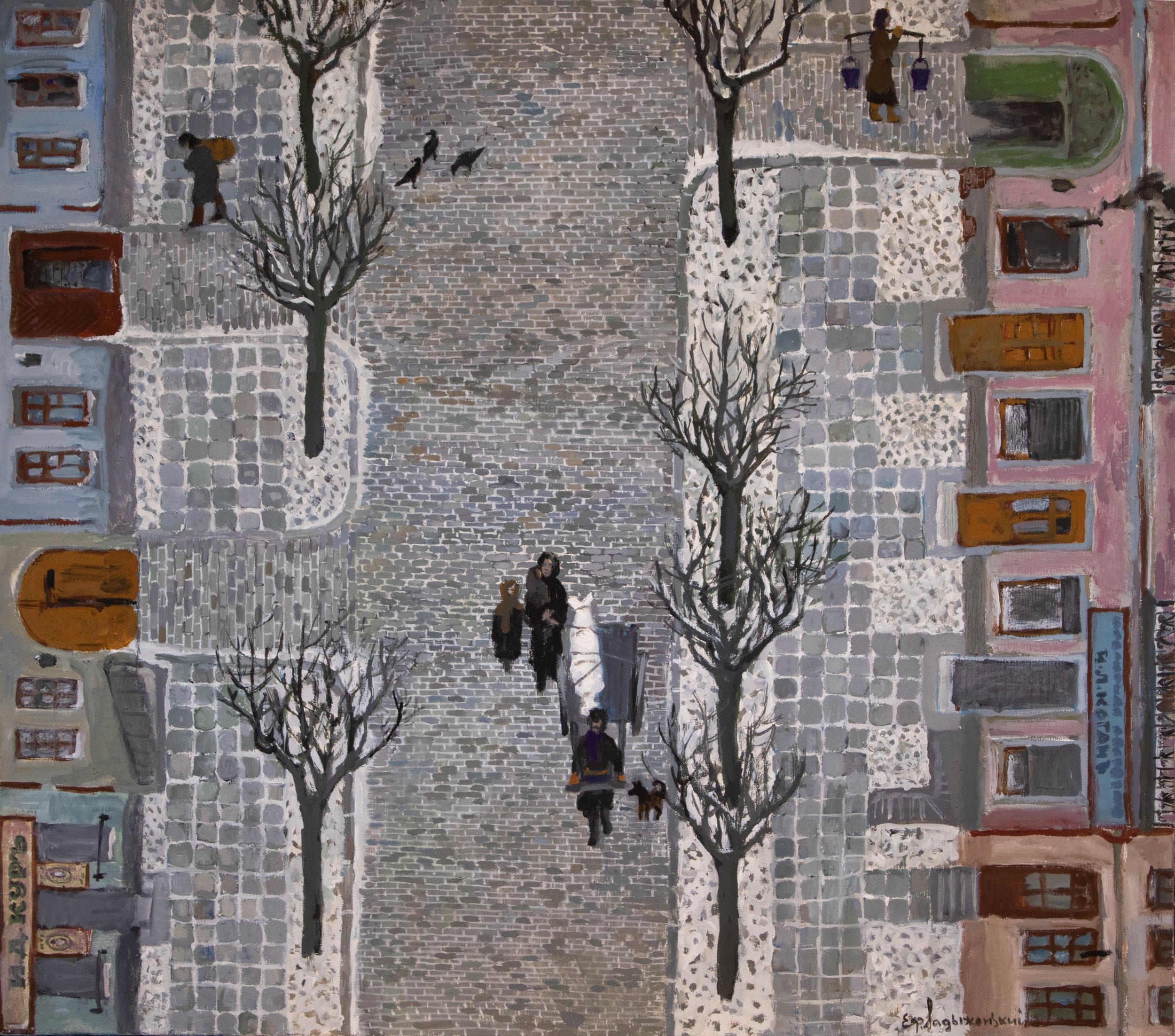Ladyzhensky’s treatment of Jewish life in Odessa is joyful and humorous, but underlying these scenes are reminders of the hardships, scarcities, and social transformations faced by Jews in early 20th-century Odessa.
In Blessings to the Bridegroom and the Bride, a family is seated around a table, enjoying wine and a meal. Notably absent are the chairs which they ought to be sitting on. Ladyzhensky recalls that, because his family and neighbors did not have enough firewood, they would burn their chairs for warmth; thus, there was always a shortage of chairs.
Ladyzhensky treats even a somber funerary scene with subtle humor: My Street in 1921 depicts Ladyzhensky’s family bringing his father to be buried, and even the family dog, Belka, is depicted here in black, as if she too is in mourning.
In these scenes, Ladyzhensky marries solemnity to humor, and celebration to hardship.
What other opposing or contradictory moods and attitudes does Ladyzhensky fuse in his depictions of Odessan life?


